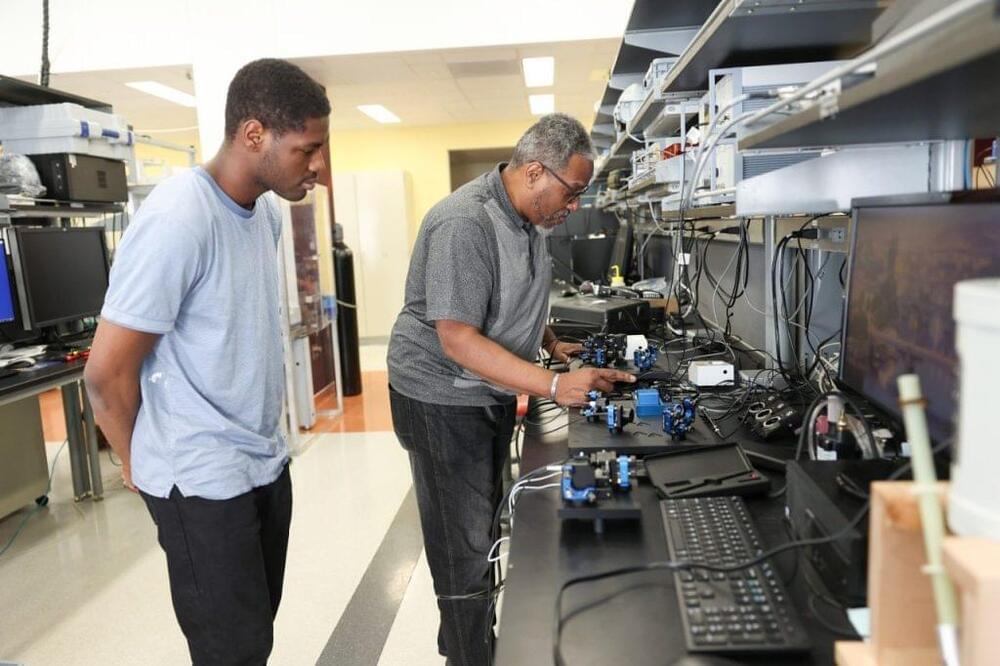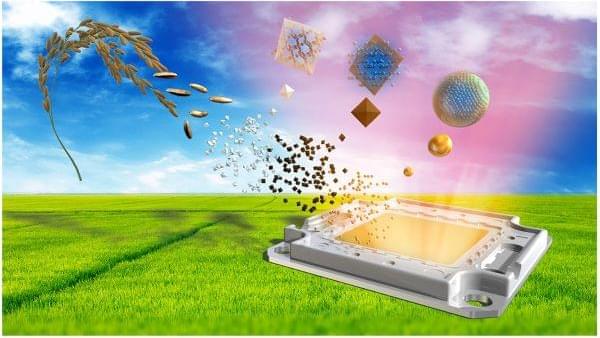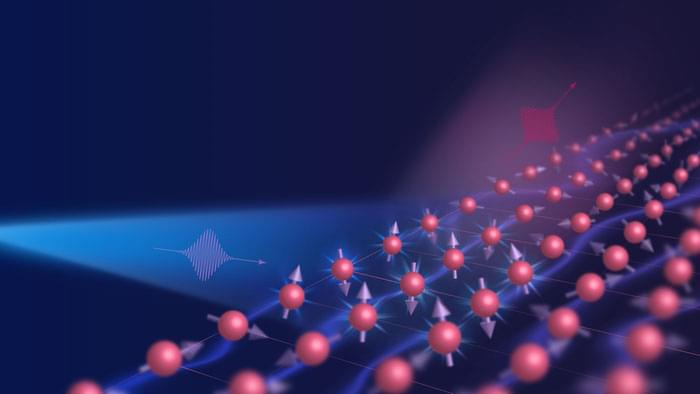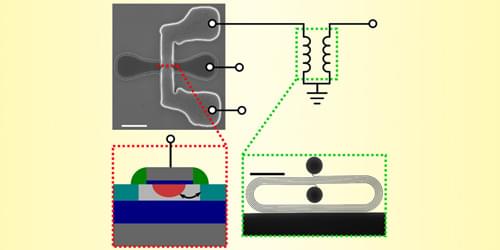Virginia Tech researchers are exploring quantum applications to improve communications systems, bring new methods for securing data, make devices more energy efficient, and make computers smaller.



Circa 2020 Electricity free grow lights using quantum dot leds.
While costs are coming down for controlled environment agriculture, electricity remains one of the highest because it has to power the LEDs that provide the lighting formula for plant growth. But a materials science company called UbiQD wants to change that by replacing electricity with a more efficient means of lighting: quantum dots.
Quantum dots are semiconductor nanoparticles that can transport electrons. When exposed to UV lighting, these particles emit lights of various colors, and can be adjusted in size to emit a specific color. For example, larger particles emit redder wavelengths, while smaller ones shift to blue.
Via its UbiGro product, UbiQD uses a patented quantum dot technology to create a layer of lighting in greenhouses. Quantum dots are embedded into a film that is installed beneath a greenhouse cover. When illuminated by sunlight, the film converts shorter wavelengths (UV and blue) to longer ones (red/orange), the latter being the most photosynthetically efficient wavelengths.

From TVs, to solar cells, to cutting-edge cancer treatments, quantum dots are beginning to exhibit their unique potential in many fields, but manufacturing them at scale would raise some issues concerning the environment. Scientists at Japan’s Hiroshima University have demonstrated a greener path forward in this area, by using discarded rice husks to produce the world’s first silicon quantum dot LED light.
“Since typical quantum dots often involve toxic material, such as cadmium, lead, or other heavy metals, environmental concerns have been frequently deliberated when using nanomaterials,” said Ken-ichi Saitow, lead study author and a professor of chemistry at Hiroshima University. “Our proposed process and fabrication method for quantum dots minimizes these concerns.”
The type of quantum dots pursued by Saitow and his team are silicon quantum dots, which eschew heavy metals and offer some other benefits, too. Their stability and higher operating temperatures makes them one of the leading candidates for use in quantum computing, while their non-toxic nature also makes them suitable for use in medical applications.

Researchers from PSI’s Spectroscopy of Quantum Materials group together with scientists from Beijing Normal University have solved a puzzle at the forefront of research into iron-based superconductors: the origin of FeSe’s electronic nematicity. Using Resonant inelastic X-ray scattering (RIXS) at the Swiss Light Source (SLS), they discovered that, surprisingly, this electronic phenomenon is primarily spin driven.
Electronic nematicity is believed to be an important ingredient in high-temperature superconductivity, but whether it helps or hinders it is still unknown.
Their findings are published in Nature Physics (“Spin-excitation anisotropy in the nematic state of detwinned FeSe”).

Try to picture a proton — the tiny, positively charged particle within an atomic nucleus — and you may envision a familiar, textbook diagram: a bundle of billiard balls representing quarks and gluons. From the solid sphere model first proposed by John Dalton in 1,803 to the quantum model put forward by Erwin Schrödinger in 1926, there is a storied timeline of physicists attempting to visualize the invisible.
There’s a key aspect of quantum computing you may not have thought about before. Called ‘quantum non-demolition measurements’, they refer to observing certain quantum states without destroying them in the process.
If we want to put together a functioning quantum computer, not having it break down every second while calculations are made would obviously be helpful. Now, scientists have described a new technique for recording quantum non-demolition measurements that shows a lot of promise.
In this case, the research involved mechanical quantum systems – objects that are relatively large in quantum computing terms, but exceedingly tiny for us. They use mechanical motion (such as vibration) to handle the necessary quantum magic, and they can be combined with other quantum systems too.
Slow processing… but good for display devices, interacting with other systems, bio-sensors/health monitoring, etc.
In this video I explain Organic Flexible CPUs and Organic Transistors. What is the-state-of-the-art of Organic Electronics? If this technology can replace Silicon Chips or not?
#CPU #OrganicCPU #FlexibleCPU
***
WATCH NEXT:
➞ Silicon Quantum Computer from Intel: [https://youtu.be/j9eYQ_ggqJk](https://youtu.be/j9eYQ_ggqJk)
➞ New WoW Processor explained: [https://youtu.be/-NeRIrRSFs4](https://youtu.be/-NeRIrRSFs4)
➞ DOJO AI Accelerator: [https://youtu.be/QurtwJdb5Ew](https://youtu.be/QurtwJdb5Ew)
***

New schemes based on Rydberg superatoms placed in optical cavities can be used to manipulate single photons with high efficiency.
The past decade has witnessed swift progress in the development and application of quantum technologies. Many promising directions involve using photons, the smallest energy packets of light, as carriers of quantum information [1]. Photons at optical wavelengths can be quickly transported through optical fibers over long distances and with negligible noise, even at room temperature. Unfortunately, one drawback is that photons do not normally interact with each other, which makes it challenging to manipulate a photon with another photon. Optical photons also couple weakly with other quantum systems, such as superconducting qubits, which makes it hard to interface these platforms with photons.

A new design based on the quantum capacitance of a silicon quantum dot could enable scalable, high-fidelity qubit readout.
The Facility for Rare Isotope Beams opens its doors to experiments that will study the formation of heavy elements in the Universe and provide critical tests of nuclear theories.
A “forever battery” is much smaller and more energy-dense than lithium-ion. They’ll change the world and unlock a trillion-dollar revolution.
In this week’s episode, Aaron and I discuss what could be the “holy grail” of energy: the solid-state — or forever battery. Obviously, lithium-ion cells are the status quo of today. And they power pretty much everything, like your smartphone, laptop and electric vehicle.
However, since they comprise liquids and can only be compressed so much, they aren’t the most energy-dense. And we see this limitation all around us. It’s why that EV in your parking space can’t drive long ranges or recharge very fast. And it’s why that smartphone in your pocket will run out of juice by the end of the day.
The truth about the EV Revolution that’s got everyone hyped is that it won’t boom until we make better batteries. Enter solid-state battery technology — much smaller, more effective and energy-dense than its liquid-state counterparts. This “forever battery,” as insiders have dubbed it, will fundamentally alter the way things work in society. And it’ll unlock a potentially multi-trillion-dollar revolution in the process.